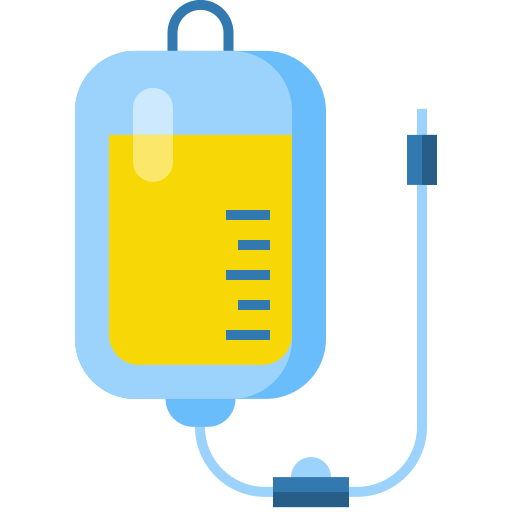
Glucose 11% + Vamin 18 Novum + Intralipid 20%
1440 ml/bag
Radiant Pharmaceuticals Ltd.
Product Details
Description
Infusion rate: The maximum infusion rate for glucose is 0.25 g/kg/hour Amino acid dosage should not exceed 0.1 g/kg/hour Fat dosage should not provide more than 0.15 g/kg/hour The infusion rate should not exceed 3.7 ml/kg/hour (corresponding to 0.25 g glucose, 0.09 g amino acids, 0.13 g fat per kg body weight). The recommended infusion period for individual bags of this solution is 12-24 hours. Method and duration of administration: Intravenous infusion into a Perifer or central vein. The infusion may be continued for as long as required by the patient's clinical condition. In order to minimize the risk of thrombophlebitis, daily rotation of the infusion site is recommended.
The soybean oil present in this intravenous preparation has vitamin K1. Vitamin K1 can reverse the anticoagulant activity of coumarin and coumarin derivatives, including warfarin, which works by blocking recycling of vitamin K1. Monitor laboratory parameters for anticoagulant activity in patients who are on both this intravenous preparation and coumarin or coumarin derivatives.
Hypersensitivity to egg-, soya- or peanut protein or to any of the active substances or excipients. Severe hyperlipaemia Severe liver insufficiency Severe blood coagulation disorders Inborn errors of amino acid metabolism Severe renal insufficiency without access to haemofiltration or dialysis Acute shock Hyperglycemia, which requires more than 6 units insulin/h Pathologically elevated serum levels of any of the included electrolytes. General contra-indications to infusion therapy acute pulmonary oedema, hyper hydration and decompensated cardiac insufficiency and hypotonic dehydration Haemophagocytotic syndrome Unstable conditions (e.g. severe post-traumatic conditions, uncompensated diabetes, acute myocardial infarction, metabolic acidosis, severe sepsis and hyperosmolar coma) Infants under 2 years of age
The infusion may cause a rise in body temperature (incidence <3%) and, less frequently, shivering, chills and nausea/vomiting (incidence<1 %). Transient increases in liver enzymes during intravenous nutrition have also been reported. Reports of other undesirable effects in conjunction with the included components are extremely rare. Hypersensitivity reactions (anaphylactic reaction, skin rash, urticaria), respiratory symptoms (e.g. tachypnoea) and hyper/hypotension have been described. Haernolvsis. reticulocytosis, abdominal pain, headache, nausea, vomiting, tiredness and priapism have been reported.
The ability to eliminate fat should be monitored. It is recommended that this is done by measuring serum triglycerides after a fat-free period of 5-6 hours. The serum concentration of triglycerides should not exceed 3 mmol/l during infusion. The bag size, especially the volume and the quantitative composition, should be carefully chosen. These volumes should be adjusted according to the hydration and nutritional status of the children. One reconstituted bag is for single use. Disturbances of the electrolyte and fluid balance (e g. abnormally high or low serum levels of the electrolytes) should be corrected before starting the infusion. Special clinical monitoring is required at the beginning of any intravenous infusion. Should any abnormal sign occur, the infusion must be stopped. Since an increased risk of infection is associated with the use of any central vein, strict aseptic precautions should be taken to avoid any contamination during catheter insertion and manipulation. This solution should be given with caution in conditions of impaired lipid metabolism due to renal insufficiency, uncompensated diabetes mellitus, pancreatitis, impaired liver function, hypothyroidism (with hypertriglyceridemia or sepsis. If this solution is given to patients with these conditions, close monitoring of serum triglyceride concentrations is mandatory.
Nausea, vomiting and sweating have been observed during infusion of amino acids at rates exceeding the recommended maximum rate. An impaired capacity to eliminate fat may lead to the fat overload syndrome as a result of overdosage, but also at recommended rates of infusion in association with a sudden change in the patient's clinical condition, such as renal function impairment or infection. The fat overload syndrome is characterised by hyperlipaemia, fever, fat infiltration, hepatomegaly, splenomegaly, anaemia, leucopenia, thrombocytopenia, blood coagulation disorders and coma. These changes are invariably reversible on discontinuation of the fat infusion If symptoms of overdose occur, the infusion should be slowed down or discontinued. In some rare serious cases, hemodialysis. haemofiltration or haemo-diafiltration may be necessary.
Parenteral nutritional preparations
Store at 25°C. Do not freeze. It is recommended to store.
-
Support 24/7
Call us anytime -
100% Safety
Only secure payments